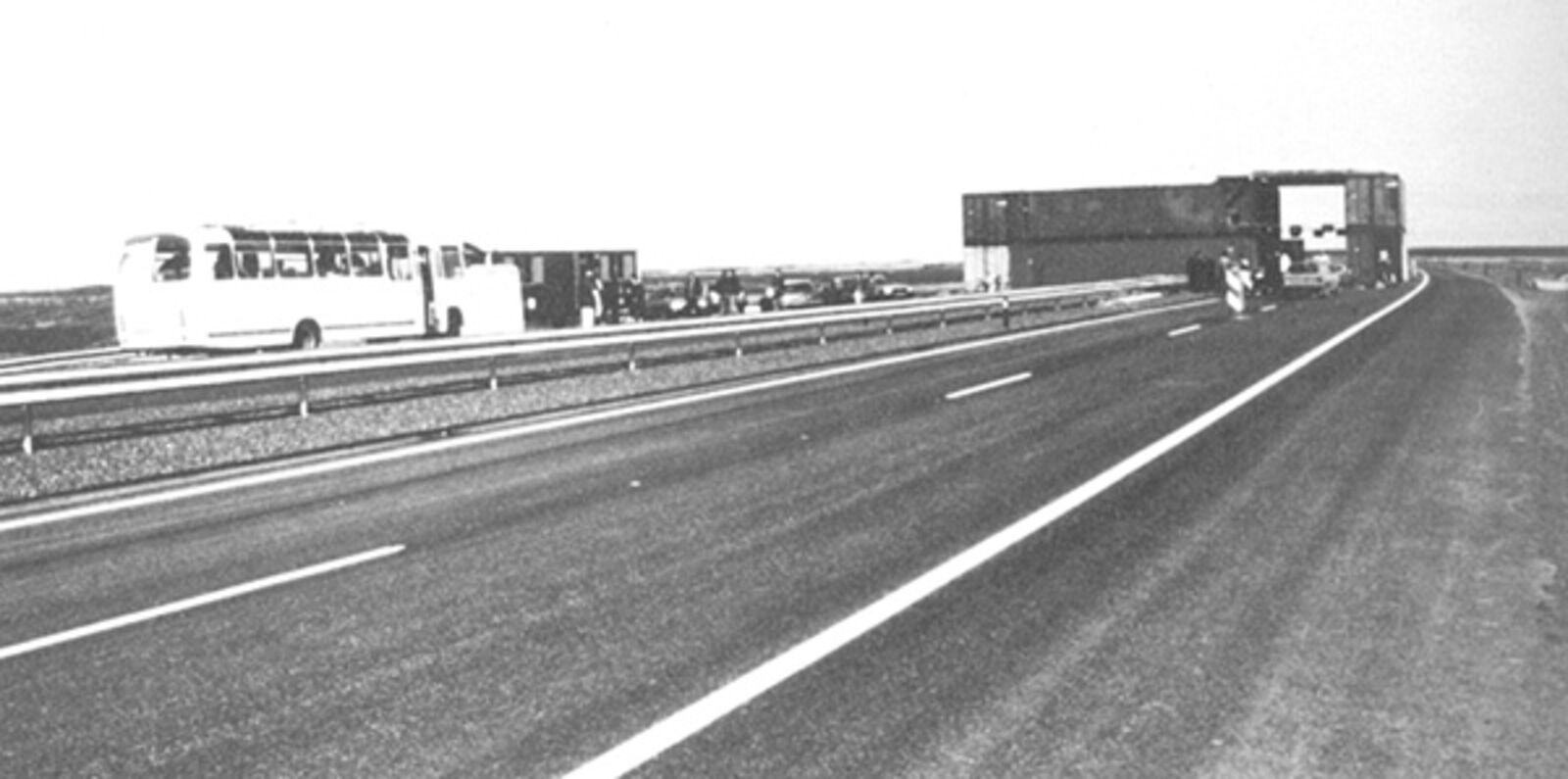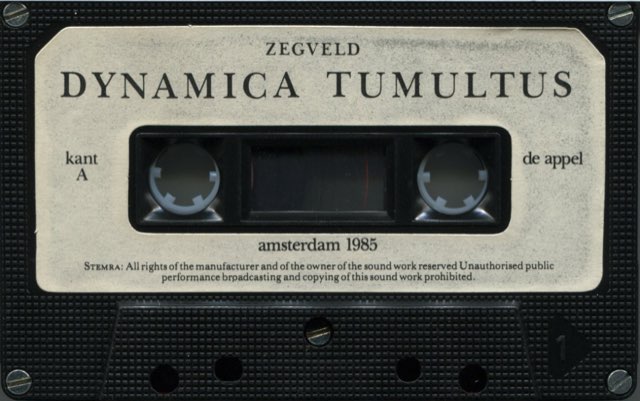Peter Zegveld "Dynamica Tumultus"
de Appel, Brouwersgracht 196, Amsterdam

© Bart Lootsma

© Bart Lootsma

© Oscar van Alphen, Amsterdam

© Oscar van Alphen, Amsterdam
‘It’s freezing cold on the 25th of April and the forecast is for snow. We are standing in the middle of the polder on a deserted motorway next to a construction made of orange containers. Canvas is flapping in the fierce wind and sometimes one of the steel doors slams shut. A shipwreck in Almere harbour? The first performance of Peter Zegveld's Dynamica Tumultus will take place here this evening, a composition in sound and image in which cars, driving fast, play an important role. (...) The band (with whom Peter Zegveld also performs under the name of Caspar Rapak) and the choir are made up of different kinds of musicians, professionals as well as amateurs, they play in punk bands, jazz or classical groups. There had already been extensive rehearsals during the previous weeks and a section of the music has had an unofficial premiere at the Paradiso the Sunday before. Yesterday, cars and motor cycles were added for the first time during the dress rehearsal in the polder. They have to drive through a narrow opening between the containers at a speed of more than 140 kilometres per hour. Below that speed, the desired effect is not achieved. The containers are stacked double around a platform thus creating a small theatre. The roof is built with thick beams which normally ensure that the draglines don't sink into the mud. The public looks out at the section of the road where the cars will rush by. In front are two other stages one to the left for the choir and one to the right for the band. A large quantity of sound equipment has been piled up on one of the containers including six tape recorders. (...) Zegveld begins the concert with a signal on an organ made of engine horns which are connected with bottles of compressed air, as if he is challenging the cars. He presses the knobs like one possessed. Then he walks to a case by the wall in which a number of sound mixers are stacked on top of each other. He slowly turns up a few channels and sound is heard in the space composed from various noises, each consisting of a continuously-held tone. It is a strange blending of electronic and concrete sound which creates a kind of carpet of noises. Again Zegveld gives the signal on the horns and, after some time, we now hear a car approaching. In a flash, it rushes by - a blue Mercedes. 'Jesus', someone mutters as they pass through the hall. There follow, at regular intervals: a silver-grey Audi, a black Range Rover, a yellow Volvo and a BMW only ten metres away from the public. Each car has it own characteristic sound and after each passing, Zegveld brings the sound up or down a tone to keep the wall of sound balanced afterwards. After waiting some time, we hear a tuned-up motorcycle accelerating in the distance and coming towards us. The bike was driven so fast that it was completely invisible. Now there is great excitement in the hall. The first one is immediately followed in a flash by two more motorcycles. The music coming from the loudspeakers grows quiet. The cars start passing again but now they all have horns mounted in front. Each car has its own tone which can be heard from far away and which reverberates even after it has past. Peter Zegveld makes a very low rumble come out of the loudspeakers. It becomes progressively louder and higher until the wall of the containers almost begin to vibrate. The light goes out and after some time a stroboscope is switched on. Then the cars race past again with searchlights directed at the public. The short flashes of light suggest lightning. The rumble persists after the last car and then stops abruptly. In the silence, we hear the rain pattering on the roof. Still in darkness Zegveld builds up a new sound carpet out of various tapes and hiss. A tuba imitates the sound of the passing cars. Then he has the cars and motorcycles drive past again and the first part of the concert ends with a recording of a women's choir. Then the light comes on. He again gives the signal on the engine horns and the choir and band come inside the 'theatre' via the motorway. In the second part of the concert, Zegveld performs exclusively as conductor. He has the guitarists knock on the wood of their guitars so that the strings resonate softly. The choir hums. Zegveld slowly builds up the tension as various instruments join in: choir and band hold just one tone. Once more he has the cars and motorcycles flash past over and over again. After each passing, according to the conductor's directions, either the key ascends or descends one tone or the band emphasizes the passing by a sudden loud crack. Zegveld now works up to a climax. He has the choir sing louder and louder, the guitarists no longer knock on the wood of their instruments but hit the strings directly. At the highest point, the choir is nearly screaming, progressively higher and higher each time a car or motorcycle passes by. Zegveld himself, whose face is becoming red, gives the example. (...) Then it’s finished. The public applauds enthusiastically. Zegveld stands to one side giggling. During this first performance, a number of the choir's members were startled by the passing cars and, because of this everything wasn't always synchronized correctly. Lex de Groot, who assisted Zegveld with the project’s technical aspect, was brought forward to share the applause.’ (Bart Lootsma, ‘A Doppler-concert’, De Appel, 5 (1985) 2, pp. 30-32.)
